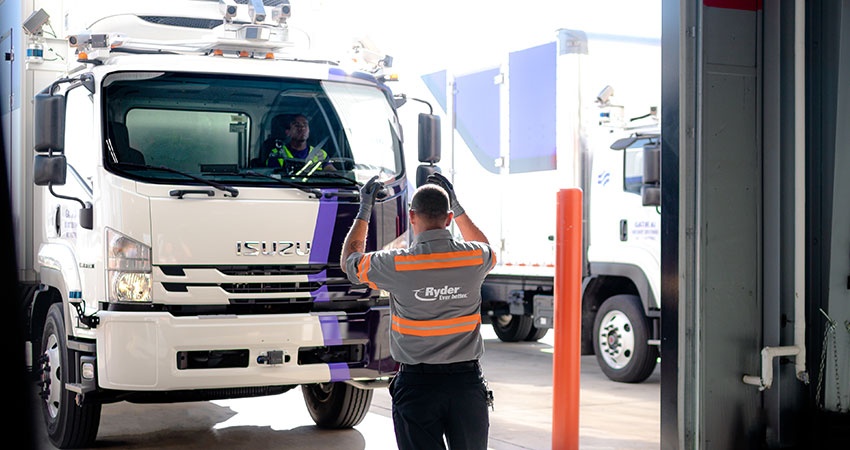Truck leasing, logistics and fleet management provider Ryder has made an investment in Gatik, whose technology will power autonomous middle mile deliveries for retail and ecommerce clients in the Dallas-Fort Worth area, initially equipping 20 leased Ryder box trucks for the purpose.
Gatik recently raised $85 million in a funding round, which RyderVentures participated in at an undisclosed level, bringing the total raised to $114.5 million. The round was led by new investor Koch Disruptive Technologies (KDT), along with existing investors Innovation Endeavours, Wittington Ventures, FM Capital, Dynamo Ventures, Trucks VC, Intact Ventures and others.
This follows Ryder’s recent partnerships with autonomous vehicle startups TuSimple, Waymo Via and Embark as the company puts a heavy emphasis on what it sees as the future of transportation and delivery services, in the midst of a severe driver shortage.
“For us, we were thinking about what are the most disruptive technologies to our business, and autonomous vehicles is one of them,” said Karen Jones, CMO and head of new product development for Ryder. “So, we set out to identify, who are the players, what do we need to be doing, and how does Ryder play in the autonomous vehicle world?”
The fleet of 20 medium-duty, multi-temperature box trucks from Ryder will be used to transporting goods to retail locations from micro-fulfillment centers or dark stores for Gatik’s new and existing customers, with a focus on replenishing ecommerce as well as wholesale operations. Ryder will service and maintain the trucks, including calibration of autonomous vehicle sensors and pre- and post-trip inspections.
Richard Steiner, head of policy and communications for Gatik, said the company, founded in 2017, has been doing autonomous middle mile deliveries for Walmart since July 2019, and for grocer Loblaw since January 2020, as well as other Fortune 500 customers. It has operations in Louisiana, Texas, Arkansas and Ontario, Canada.
Steiner said Gatik has carved out a niche in autonomous middle mile delivery as a critical piece of replenishing ecommerce stocks, as more inventory is pushed closer to end customers via the growth of micro-fulfillment centers and dark or “grey” stores.
“Ecommerce is through the roof, and consumers no longer want to wait three or four days to get their order,” Steiner said. “They want a 1-2-hour delivery window. So, major retailers are bringing stocks closer and closer to consumers to facilitate the movement of inventory, which means more trips and more trucks. This creates a costly and complicated supply chain.”
To make this more efficient, Steiner said Gatik enables retailers to set up autonomous runs along fixed point-to-point routes, with fleets that can operate up to 22 hours a day, seven days a week, without concerns about driver shortages or meeting regulations on driving hours logged.
“Texas is a priority market for us,” Steiner said. “Autonomous vehicle regulations are more permissive, the weather is generally good and there’s a density of our customers so we’re able to look at multi-tenant models. It’s very efficient for us.”
He said the same autonomous fleet can deliver high-priority items like groceries during the day, and other consumer goods or electronics at night, with the increased uptime they enable.
Jones said Ryder is focused on being a provider of hub and maintenance capabilities for autonomous fleets, as “that’s where the biggest holes are” in the model. She said the company has been on a five-year journey of discovery and investment in ecommerce enablement, asset sharing, digitizing the supply chain and advanced vehicle technology, i.e., autonomous vehicles.
“When Gatik came along their focus on the middle mile was interesting as all these other companies are doing over-the-road, long haul trucking,” Jones said. “They’re unique, with repeatable, shorter hauls using smaller vehicles. They’re teaching us really interesting things about that segment, that leg of the autonomous future.”

